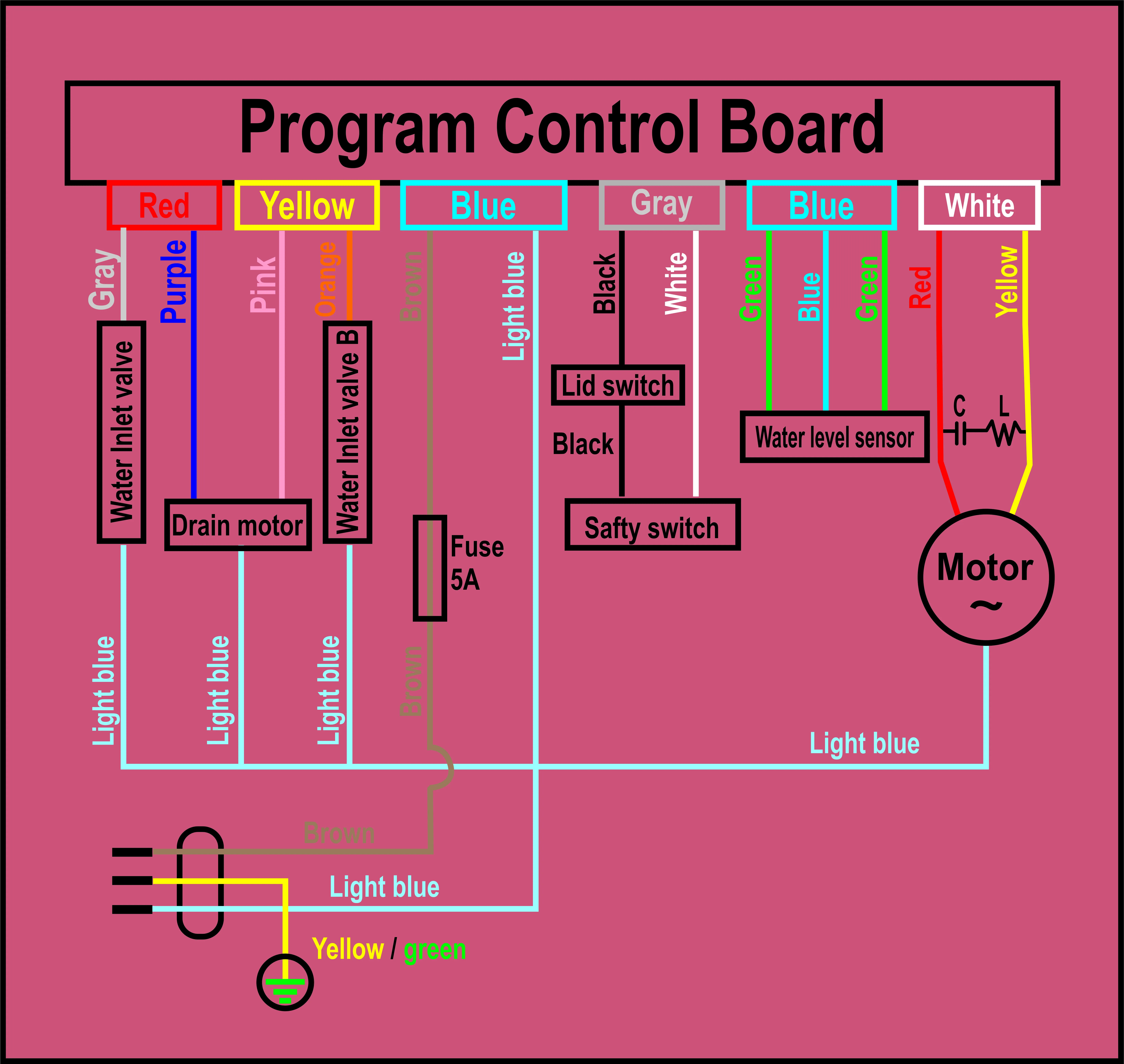
Introduction to Automatic Washing Machines
Automatic washing machines have simplified laundry chores for millions of households worldwide. These sophisticated appliances rely on intricate electrical systems to function efficiently. Understanding the wiring diagram of an automatic washing machine is crucial for maintenance and repair tasks.
Automatic washing machine wiring diagram

Understanding Wiring Diagrams
Wiring diagrams serve as blueprints that illustrate the electrical connections within a washing machine. They offer a visual representation of the circuitry, enabling technicians and enthusiasts to comprehend the intricate network of wires and components.
Types of Wiring Diagrams
Washing machine wiring diagrams come in various forms, including schematic diagrams, ladder diagrams, and pictorial diagrams. Each type provides a unique perspective on the electrical system, catering to different levels of technical expertise.
Components of an Automatic Washing Machine
To grasp the wiring diagram fully, one must first understand the essential components of an automatic washing machine. These components include:
Motor
The motor powers the drum’s rotation and facilitates the washing process.
Timer
The timer controls the sequence of operations during the wash cycle, regulating the duration of each phase.
Water Inlet Valve
The water inlet valve regulates the flow of water into the washing machine, ensuring proper water levels for the wash cycle.
Temperature Control Switch
This switch allows users to adjust the water temperature according to their preferences and laundry requirements.
Drain Pump
The drain pump expels used water from the washing machine after each cycle, maintaining cleanliness and efficiency.
Importance of Wiring Diagrams in Washing Machines
Wiring diagrams act as roadmaps for troubleshooting electrical issues in automatic washing machines. They provide technicians with valuable insights into the machine’s circuitry, facilitating accurate diagnosis and swift repairs.
Basic Wiring Diagram for Automatic Washing Machines
A basic wiring diagram for automatic washing machines comprises several key elements:
Motor Wiring
The motor wiring connects the motor to the power source and controls its operation.
Timer Wiring
The timer wiring dictates the timing and sequence of events throughout the wash cycle.
Water Inlet Valve Wiring
The water inlet valve wiring governs the flow of water into the washing machine, ensuring optimal performance.
Temperature Control Switch Wiring
The temperature control switch wiring regulates the water temperature based on user settings.
Drain Pump Wiring
The drain pump wiring facilitates the expulsion of used water from the washing machine, maintaining cleanliness and efficiency.
Advanced Wiring Diagrams and Troubleshooting
Advanced wiring diagrams delve into intricate details, addressing complex issues and troubleshooting scenarios. Common problems include motor malfunctions, timer failures, and electrical shorts, all of which require precise analysis and remediation.
Safety Measures When Dealing with Wiring
Safety should always be a top priority when handling electrical components. Before attempting any repairs or modifications, ensure that the washing machine is unplugged and disconnected from the power source. Additionally, use insulated tools and exercise caution to prevent electrical accidents.
Maintenance Tips for Automatic Washing Machines
Regular maintenance is essential to prolonging the lifespan of automatic washing machines. Simple tasks such as cleaning the lint filter, inspecting hoses for leaks, and lubricating moving parts can prevent costly repairs and optimize performance.
Conclusion
In conclusion, understanding the wiring diagram of an automatic washing machine is indispensable for maintaining functionality and addressing technical issues effectively. By familiarizing oneself with the electrical components and circuitry, users can troubleshoot problems with confidence and ensure smooth operation for years to come.
FAQs
- Can I repair my washing machine’s wiring myself?
- While basic troubleshooting may be feasible for DIY enthusiasts, complex repairs should be entrusted to qualified technicians to avoid safety hazards.
- What should I do if my washing machine stops working suddenly?
- Check the power supply, circuit breakers, and wiring connections before contacting a professional for diagnosis and repair.
- Are wiring diagrams available online for specific washing machine models?
- Yes, many manufacturers provide wiring diagrams and technical documentation on their websites for reference and troubleshooting purposes.
- How often should I inspect the wiring of my washing machine?
- It is advisable to conduct visual inspections periodically and address any signs of wear or damage promptly to prevent potential malfunctions.
- What precautions should I take when working with electrical components?
- Always disconnect the power source and exercise caution to avoid electric shock or injury.

